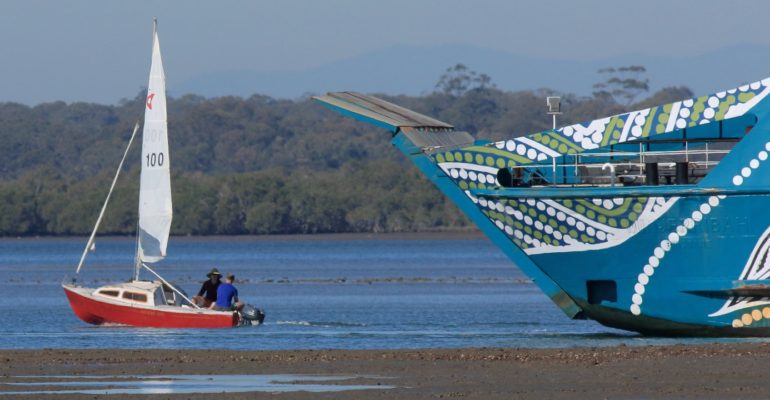
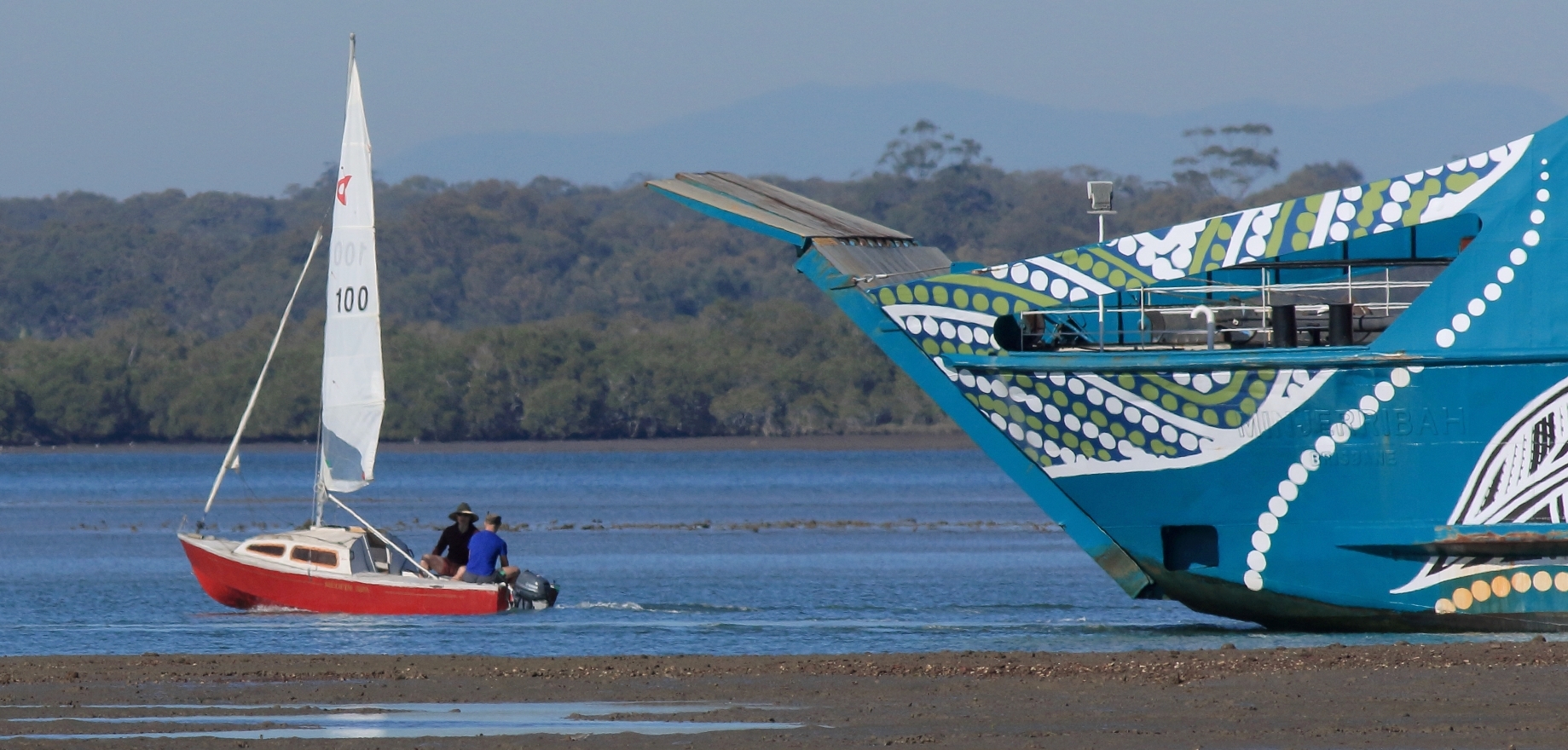
Leaving Toondah Harbour
Community engagement in planning for Toondah Harbour has been woeful under the priority development area process initiated by the LNP and supported by the current Labor government. Public interest has been been ignored and secretive decision-making allowed under the implausible excuse of “commercial in confidence”.
Since the public last had an opportunity to comment, in 2014, the scale of development has morphed from 800 to 3,600 apartments. The project now plans more dredging of sensitive coastal areas than the controversial Abbot Point Harbour coal port expansion.
Upgrade of Toondah port facilities as the gateway to North Stradbroke Island is a laudable objective. The islands visitors and residents need better car parking facilities. But poor project choices are being made and justified on the basis that the preferred developer Walker Corporation must be allowed to have a mega development so new infrastructure can be provided at “at no cost to ratepayers”, while ignoring adverse impacts on environmental, social, economic and community values.
Suggestions that the proposed plans now be decided by ‘environmental professionals’ through the EPBC assessment process distract community attention from policy and commercial choices made untransparently by Redland City Council, the LNP Government and the current Labor Government which the community has not been consulted on.
Community action
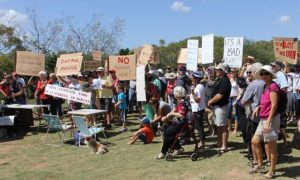
Community protest against Toondah plans- 2014
Community outrage over Toondah has provoked waves of correspondence, social media campaigns parliamentary petitions as well as formal submissions in 2013 and again in 2014.
As community awareness grows more and more people are questioning the scale, merit purpose and impacts of the proposed Walker Corporation development. An array of community organisations are ringing alarm bells at a regional, state and national level.
An Urban Design Workshop by a panel of planning professionals concluded in 2014 “this dreadful and grandiose PDA scheme is something of the type we would normally only expect of some lunatic despotic government in the Third World”.
Another round of community input was sparked when the Toondah Harbour development was referred to the Federal Government for environmental assessment in 2015.
In January 2016, Redlands2030 convened an Environmental Impact Workshop at which experts in ecology, corals, migratory and wader birds made their expertise available to the community.
The latest Toondah workshop in June 2016 was designed to allow planning and lands professionals put their thinking and expertise before the community without the legacy of poor planning to date. It was intended to be a “clean slate” approach.
“Clean Slate” planning
It’s clear that Toondah Harbour’s port facilities need improvement. Doing nothing is not an option. However the current proposal for a large scale residential development in Moreton Bay is unrelated to the needs of the port. In 2009, another coastal development proposal by Walker Corporation at Ralphs Bay in Tasmania was rejected, leading to a state wide ban on canal developments. For years, it’s been unlikely a coastal development with the scale and impact of the Toondah Harbour PDA would be countenanced in New South Wales or Victoria.
Redlands2030 invited experts in the fields of planning, architecture, engineering, landscape architecture, ecology, academia and economics to outline an alternative planning scenario for the Toondah Harbour PDA. They were invited to consider a clean slate scenario. The clean slate was taken to be the time of the Toondah Harbour Development Scheme (released for public comment in early 2014) as opposed to the Walker Corporation’s mega development proposal.
The Redlands2030 “Clean Slate” forum dealt with:
Lay of the land and sea
An overview of the tenure and management of the land included in the PDA was provided by Tom Taranto. Most of the PDA area is State land in the form of leases, public parks and land in freehold title including areas owned by Council.
It was noted that most of the PDA is in fact land below highwater, which is State land below sea level and under the waters or Moreton Bay.
What remains a mystery is how the Government and Council contrived to revoke part of the Moreton Bay Marine Park and the international Ramsar area, renege on the Urban Footprint of the SEQ Regional Plan, contravene international wader bird agreements, and down play down Native Title implications. The PDA includes GJ Walter Park, areas of mangroves, foreshore and land below sea level. Swept up in the PDA are changes to tenures which should have been the subject of extensive community consultation.
Feedback:
It is all public land..we are seeing sale of assets and alienation of parks
Best Practice Sustainable Land Use Planning
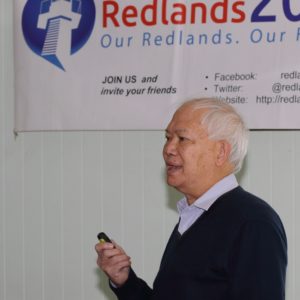
Professor Darryl Low Choy
Professor Darryl Low Choy gave fast forward précis of best practice planning and his presentation applies to the Toondah clean slate and other planning including the draft City Plan. Attendees could clearly see the deficiencies of the PDA Development Scheme (as both drafted and approved).
- Contemporary planning approaches which should include:
- Values-led planning
- Science informed or evidence based planning
- Planning at the landscape scale
- Strategic and long term planning
- “Joined up” planning (or rowing in the same direction)
- Processes for best practice planning
- Continuous planning
- Planning with the community (and embracing a community engagement approach)
- Principles of best practice planning
- Back to the Future:
A “KILLER” issue for planning towards a Sustainable Moreton Bay Environs included a lack of integrated policy, implementation or management: a problem recognized in 1988.
Feedback:
Planning for the PDA and the draft City Plan have failed the best practice planning!
Good to hear someone appreciate community input and put a value on consultation.
Simple formula…community values, science, evidence and “joined up”…. why don’t they do it.
Planning with the community…a breathe of fresh air but far removed form the plan now confronting the community.
Minister for Planning…Jackie Trad should be ashamed.
More of community based planning please
Heritage Frameworks for Toondah Harbour
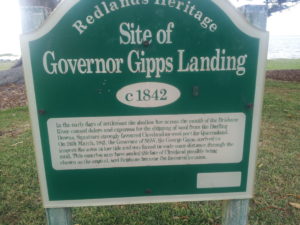
The site of Governor Gipps landing is part of our heritage
Heritage Architect Ben Gall outlined the importance of indigenous and non-indigenous heritage, heritage places. His presentation covered issues such as: Cleveland Point is a precinct of State importance from a heritage perspective and there is a rich tapestry of heritage sites, places and objects in the vicinity of the proposed development; and the lack a Cultural Heritage Management Plan and Historic Heritage Management Plan.
Feedback:
It was clearly the mud flats that decided the capital of Queensland. That is the historic landscape that will be totally remodeled by the dredging!
Heritage matters are totally inadequate in the Toondah Harbour Development Scheme.
Of course heritage matters…
This session was so rational and yet heritage fails to get proper recognition in the Toondah scheme and in the draft City Plan!
Planning and design parameters
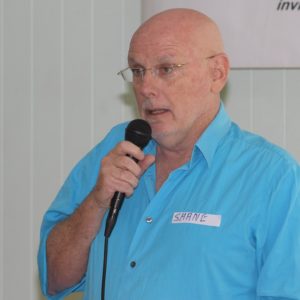
Shane Thompson
Prominent Queensland architect Shane Thompson gave an instructive presentation, about the five key stages of project planning and design. He made important observations about the clear intent any project. He was very clear that community consultation is needed to deliver the best community outcome. Two key questions were who owns the land and who owns it in the future: and the lack of clarity for the community challenge is . His observations about the secret infrastructure agreement echoed the concerns already expressed by the community. The PDA process, he said, “does not deliver best practice” .
Feedback:
A Community Reference Group (CRG) process is the well-established technique (used throughout Australia). Where is the CRG for Toondah Harbour?
If ground level car parking the streets will not be community or resident friendly…sounds like it would be awful.
Site planning seems simple…simply ignored in the Toondah Plan
The emphasis on community benefits was refreshing: how can this be possible when it is a secret!
Agree that the PDA is not and will not be best practice
Planning and design parameters
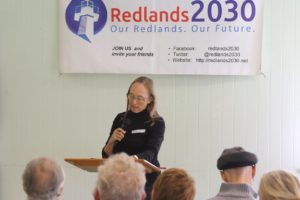
Emeritus Professor Brit Anderson
Emeritus Professor Brit Andresen observed that the Toondah development scheme of 2014 enabled development that was too big, out of character, massive impact, loss of views and aesthetics, in the face of SE winds, and a cause of traffic congestion, parking impacts and so on. She iterated the need to clearly define the problems to be solved. She was concerned that the height of residential development in a community like Cleveland as it impacted how people interacted with each other.
Feedback:
Keep residential buildings to 4-5 stories total so that people can recognise their neighbours and sustain the village feel of Cleveland
There was no mention of the “community building” in the Development Scheme…why not?
Clearly the development scheme was deficient…but the train rolls on, looks like only a train wreck can stop it. Get a new Deputy Premier asap
Masterplanning
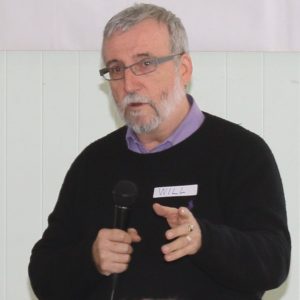
Will Marcus
Will Marcus from Argo is an experienced architect and master planner. He was concerned that a brief for 3600 apartments would mean a population density approaching that of Hong Kong and that social the demands on infrastructure was a critical issue. He illustrated his concerns by showing that the population (about 8,000) of the Toondah development will need at least two new schools.
Feedback:
Confirm “Hong Kong” density and if two new schools are need the touted infrastructure agreement and $116m of ‘free” infrastructure needs to be revealed, publicly. So we can we please see what we are getting!
The Toondah Development scheme from 2014 does measure up…it was a poor plan and remains so. Far removed from “best practice” if what we saw today counts for anything.
Traffic generation too will be much more than expected in 2014, was 30 000 movements a day mentioned…OMG.
Did he estimate that we will need another 10-12 trains a day, if the commuters travel by train…that is impossible! Why didn’t the Council and Government come clean?
Landscape settings
The threats to the natural assist of the existing park and foreshores of the Toondah Harbour precinct have been dismissed by officials and politicians with claims that they will develop better parks…nonesense! A special post was complied on Recreation settings. All forms of planning should be aware of the value of settings …because “walking ain’t walking”
Feedback:
Talk of a fenced dog park is an example of limiting the experience of existing users to get more users on the land, Crowd the venue and existing users will move out.
The existing park will be taken over by the new residents of the mega development, locals will be shoved aside
Had to think about the settings…but it makes sense and it is what we look for when deciding on a park to go to.
More to come
More presentations from the Toondah Harbour: Clean Slate planning workshop will be compiled soon.
The clean slate planning scenario is the second of the Redlands2030 workshops. Two more workshops are envisaged to deal with design issues and options; and then plan outline (worked solutions).
Community action
Planning experts resoundingly agree that the Toondah Harbour scheme has been ill conceived and fails the basis tenants of “best practice planning”. If the scheme were to go ahead it would likely become a classic example of how not to plan development.
Community action can avert this disaster in the making. Some options for action include:
- Share this post with other people
- Sign the Change.org petition “Stop the rort: just fix the port” .
- Contact local councillors, state MPs and federal MP Andrew Laming to express concerns about the proposed Toondah mega development.
Redlands2030 – 31 July 2016
Please note: Offensive or off-topic comments will be deleted. If offended by any published comment please email thereporter@redlands2030.net
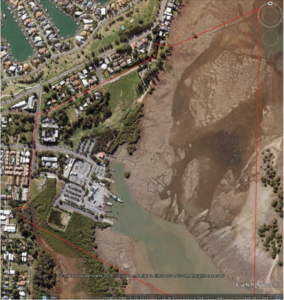
The 5 Planning Principles referred to by Prof Daryl Low Choy need further explanation in another Chapter in order to cope with 6 types of Planning and the planning and offset industries .
The consultation processes need further updating including NSW Charter , the findings of the Harbinger Report 2011 and the loss of SPA/ SARA Referrals, loss of Queensland Planning Provisions and SPPs. need disclosure.
The Heritage of the Greater Precinct, and to the Point warrants Indigenous , Historic and Marine Research and appropriate infill discoveries .
Greater Glider
‘At no cost to the community’. An inconvenient detail about Priority Development Areas, overlooked or perhaps selectively not drawn to public attention by the mayor, is this: the developer is relieved of the responsibility to pay for associated infrastructure and maintenance outside the PDA boundary. The PDA is a legal bubble. A PDA development is not subject to normal planning codes and rules. Redlands ratepayers would pay for associated infrastructure beyond the PDA, and to fix all future problems of roads, parking, pollution, sewerage, flooding, etc – in perpetuity. ‘At no cost to the community’ is intended to obscure the fact that we’ll actually pay forever. However, we could just pay to fix the port now and be done with the PDA nightmare.
Thorough planning and community discussion should be at the heart of this development. Clearly both these parameters have not been effectively dealt with or listened to.